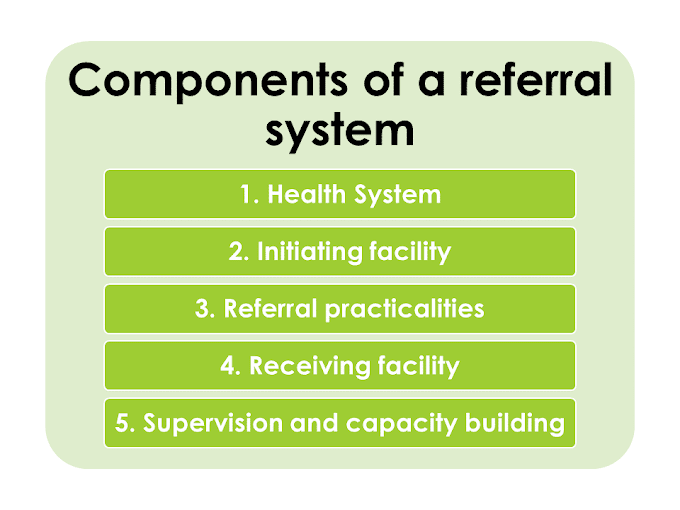 |
Occupational health is essentially preventive medicine. The Joint ILO/WHO Committee on Occupational Health, in the course of its first session, held in 1950, gave the following definition of Occupational Health.
Definition of Occupational Health
"Occupational Health should aim at the promotion and maintenance of the highest degree of physical, mental, and social well-being of workers in all occupations; the prevention among workers of departures from health caused by their working conditions; the protection of workers in their employment from risks resulting from factors adverse to health; the placing and maintenance of the worker in an occupational environment adapted to his physiological and psychological equipment, and, to summarize, the adaptation of work to man and of each man to his job".
Preventive medicine and occupational health have the same aim- the prevention of disease and maintenance of the highest degree of physical, mental and social well-being of workers in all occupations; the levels of application of preventive measures are the same - health promotion, specific protection, early diagnosis and treatment, disability limitation and rehabilitation; the are the same - epidemiologic approach, statistics, health screening, health education etc. Occupational health, therefore, is the application of preventive medicine in all places of employment.
Ergonomics
Ergonomics is now a well recognized discipline and constitutes an integral part of any advanced occupational health service.
The term "ergonomics" is derived from the Greek ergon, meaning work and nomos, meaning law. It simply means: "fitting the job to the workers".
Training in ergonomics involves designing of machines, tools, equipment, and manufacturing processes, lay-out of the places of work, methods of work and environment in order to achieve greater efficiency of both man and machine.
The object of ergonomics is "to achieve the best mutual adjustment of man and his work, for the improvement of human efficiency and well-being".
The application of ergonomics has made a significant contribution to reducing industrial accidents and to the overall health and efficiency of the workers.
Occupational Hazards
An industrial worker may be exposed to five types of hazards, depending upon his occupation:
[A] Physical hazards
[B] Chemical hazards
There is hardly any industry which does not make use of chemicals. The chemicals hazards are on the increase with the introduction of newer and complex chemicals. Chemical agents act in three ways: local action (cause dermatitis, eczema, ulcers and even cancer by primary irritant action some cause dermatitis by an allergic action), inhalation (dusts, gases, metals and their compounds etc.) and ingestion (chemical substances such as lead, mercury, arsenic, zinc, chromium, cadmium, phosphorus etc.). The ill-effects produced depend upon the duration of exposure, the quantum of exposure and individual susceptibility.
[C] Biological hazards
Workers may be exposed to infective and parasitic agents at the place of work. The occupational disease in this category are brucellosis, leptospirosis, anthrax, hydatidosis, psittacosis, tetanus, encephalitis fungal infections, schistosomiasis and a host of others. Persons working among animal products and agricultural workers are especially exposed to biological hazards.
[D] Mechanical hazards
The mechanical hazards in industry centre round machinery, protruding and moving parts and the like. About 10% of accidents in industry are said to be due to mechanical causes.
[E] Psychosocial hazards
The psychosocial hazards arise from the workers' failure to adapt to an alien psychosocial environment. Frustration, lack of job satisfaction, insecurity, poor human relationship, emotional tension are some of the psychosocial factors which may undermine both physical and mental health of the workers.
Occupational Diseases
Occupational diseases are usually defined as diseases arising out of or in the course of employment. The occupational diseases are grouped as under:
[A] Diseases due to physical agents
- Heat : Heat hyperpyrexia, heat exhaustion, heat syncope, heat cramps, burns and local effect such as prickly heat.
- Cold : Trench foot, frost bite, chilblains.
- Light : Occupational cataract, miner's nystagmus.
- Pressure : Caisson disease, air embolism, blast (explosion)
- Noise : Occupational deafness
- Radiation : Cancer, leukaemia, aplastic anemia, pancytopenia.
- Mechanical factors : Injuries, accidents.
- Electricity : Burns
[B] Diseases due to chemical agents
- Gases : CO2, CO, HCN, CS2, NH3, N2, H2S, HCl, SO2 etc. these cause gas poisoning.
- Dusts / Pneumoconiosis : (i) Inorganic
dust:
a) Coal dust – Anthracosis
b) Silica – Silicosis
c) Asbestos - Asbestosis, lung cancer
d) Iron – Siderosis
(ii) Organic (vegetable) dusts
a) Cane fibre – Bagassosis
b) Cotton dust – Byssinosis
c) Tobacco – Tobacossis
d) Hay or grain dust – Farmers’ lung
- Metals and their compounds : Toxic hazards from lead, mercury, cadmium, manganese, beryllium, arsenic, chromium etc.
- Chemicals : Acids, alkalies, pesticides.
- Solvents : Carbon bisulphide, benzene, trichloroethylene, chloroform etc.
[C] Diseases due to biological agents
Brucellosis, leptospirosis, anthrax, actinomycosis, hydatidosis, psittacosis, tetanus, encephalitis, fungal infections etc.
[D] Occupational cancers
Cancer of skin , lungs, bladder.
[E] Occupational dermatosis
Dermatitis, eczema.
[F] Diseases of psychological origin
Industrial neurosis, hypertension, peptic ulcer etc.
Health problems due to industrialization
 |
| Health problems due to industrialization |
Measures for Health Protection of Workers
- Provide balanced nutrition.
- Control on communicable disease.
- Proper environmental sanitation.
- Promotion of good mental health in workers.
- Provide special protection for women and children.
- Proper health education of industrial setting.
Prevention of Occupational Diseases
The various measures for the prevention of occupational diseases may be grouped under three heads:
[A] Medical Measures
- Pre-placement examination.
- Periodical examination
- Medical and health care services
- Notification of cases and suspected cases of occupational disease.
- Supervision of working environment.
- Maintenance and analysis of health records.
- Proper health education and counselling of worker before enters the factory.
[B] Engineering Measures
- Hazards free designing of building.
- Good house-keeping
- Workplace have good ventilation.
- Mechanization: The plant should be mechanized to the fullest possible extent to reduce the hazard of contact with harmful substances.
- Substitution: By substitution is meant the replacement of a harmful material by a harmless one, or one of lesser toxicity.
- Dusts: Workplace environment is dust free e.g. wet drilling of rock.
- Enclosure: enclosing the harmful materials and processes will prevent the escape of dust and fumes into the factory atmosphere.
- Local exhaust ventilation: By providing local exhaust ventilation dusts, fumes and other injurious substances can be trapped and extracted "at source" before they escape into the factory atmosphere.
- Use of protective devices like mask and PPE (personal protective equipment).
- Environmental monitoring: It is concerned with periodical environmental surveys, especially sampling the factory atmosphere to determine whether the dusts and gases escaping into the atmosphere are within the limits of permissible concentration.
- Statistical monitoring: Statistical monitoring comprises review at regular intervals of collected data on health and environmental exposure of occupational groups.
- Research in occupational health can provide a better understanding of the industrial health problems.
[C] Legislation
Factory laws, therefore, have been framed in every country to govern the conditions in industry and to safeguard the health and welfare of the worker. The most important factory laws in India today are:
- The Factories Act, 1948
- The Employees' State Insurance Act, 1948




0 Comments